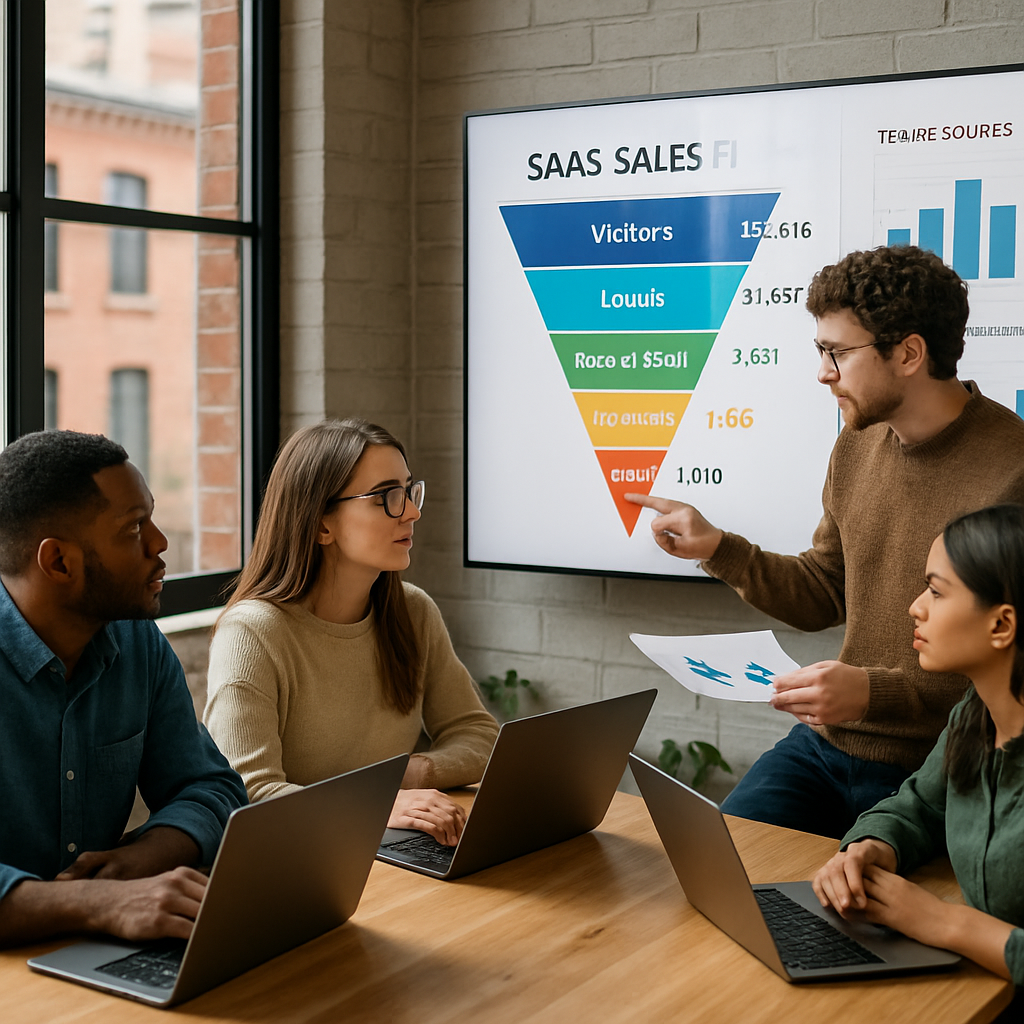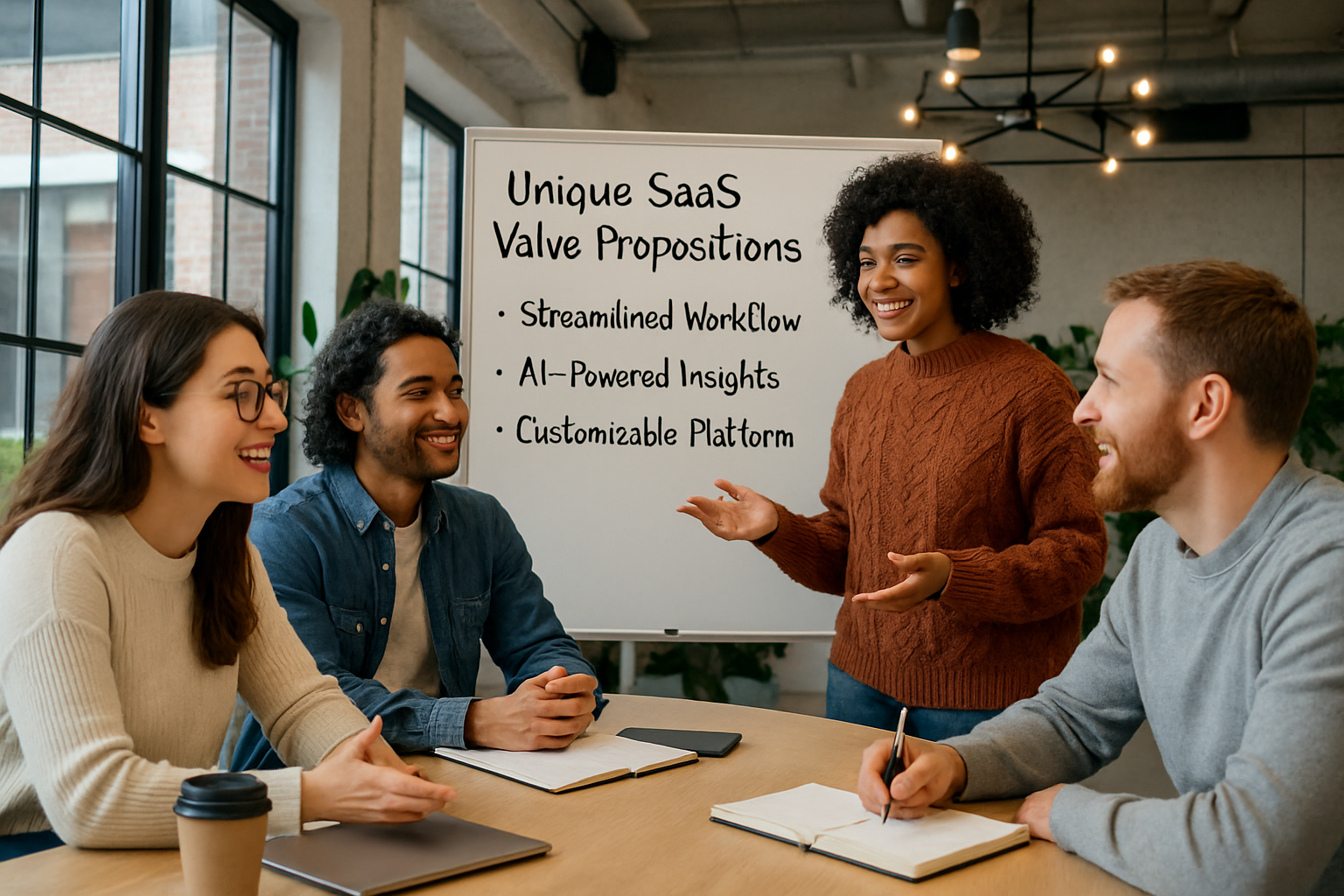In the rapidly evolving world of SaaS businesses, standing out amid fierce competition is a daunting challenge. A unique value proposition (UVP) acts as the linchpin, connecting potential customers’ needs to your SaaS solution’s distinct strengths. In 2025, crafting an effective UVP is far more than a catchy tagline – it’s a strategic narrative shaping every stage of your sales funnel from awareness through retention. SaaS companies harness technologies like Salesforce, HubSpot, and Zendesk, coupled with marketing automation platforms such as ActiveCampaign and Mailchimp, to tailor messaging with surgical precision. Achieving differentiation demands not only clear communication of your software’s unique advantages but also a deep understanding of customer pain points across diverse industry segments. This article unpacks methods for sculpting and integrating a compelling UVP into your SaaS sales funnel, enabling your team to drive qualified leads, encourage conversions, and bulldoze retention barriers in an increasingly competitive market.
Understanding the Role of a Unique Value Proposition in Your SaaS Sales Funnel
At its core, a Unique Value Proposition (UVP) differentiates your SaaS offering by succinctly communicating why your software is the preferable choice. It must instantly connect with your target audience and clearly articulate the value your product adds — especially in markets saturated with competitors like Pipedrive, Freshworks, and ClickFunnels. The UVP is not confined to marketing slogans; it guides prospect engagement, sales approaches, and customer loyalty strategies throughout your sales funnel.
Within a SaaS sales funnel, the UVP’s influence is paramount across four primary stages: Awareness, Interest & Engagement, Consideration, and Conversion. Crafting your UVP with a robust, customer-centric lens helps your funnel transition prospects seamlessly from one stage to the next.
Connecting Your UVP to the Awareness Stage
Visibility is the first hurdle. In 2025, SaaS brands employ extensive SEO optimization and employ social media presence on channels like LinkedIn and Twitter to amplify their UVP to the right audiences. Identifying ideal customer profiles (ICPs) ensures that marketing efforts resonate regionally and sector-wise.
- Pinpoint your audience’s primary pain points. For example, if targeting SMBs overwhelmed by CRM complexities, spotlight how your tool simplifies sales workflows.
- Create educational content. Blog posts, eBooks, and videos — sometimes delivered via platforms like Zendesk or Intercom integrations — convey your UVP while building authority.
- Leverage influencer collaborations. Partnering with SaaS thought leaders can lend credibility and extend reach.
This content-centric approach is vital because each prospect’s first interaction defines their perception of your value. As supported by a recent case study on https://side-business.com/case-studies-saas-funnel/, companies that embedded UVP messaging early significantly boosted awareness-to-lead conversions.
Driving Interest and Engagement through a Tailored UVP
Once prospects are aware, your unique value proposition must deepen relevance — shifting from generalized selling points to personalized insights. In this engagement phase amplified by email platforms like Drip and ActiveCampaign, curated content nurtures leads through segmentation and behavioral marketing.
- Develop a library of solution-focused webinars and FAQs. Address common queries and emphasize your product’s distinctive benefits.
- Use interactive tools. Interactive quizzes or assessments that help potential customers evaluate fit can significantly increase engagement.
- Personalize outreach. Employ marketing automation and CRM data in platforms such as Salesforce or HubSpot to ensure communications echo your UVP in a meaningful way.
For example, a SaaS startup specializing in financial reporting software enhanced engagement by integrating personalized demos triggered after webinar attendance — directly connecting UVP highlights to user needs. This tactic exemplifies combining software like Pipedrive with tools like Mailchimp to bridge marketing and sales efforts effectively.

Matching Your UVP to the Consideration and Decision Stages
During these pivotal later stages, prospects demand evidence that your SaaS solution meets their unique context better than alternatives. Presenting in-depth case studies, transparent comparisons, and consultative sales conversations anchored in your UVP framework can sway decisions favorably.
- Offer tailored product demos. Allow prospects to experience your product’s solutions firsthand, supported by features that solve their precise pain points.
- Highlight success stories. Real-world customer testimonials and metrics demonstrate reliability and ROI—factors crucial to SaaS buyers.
- Clarify pricing with transparency. Utilize clear plans and comparisons supported by platforms like ClickFunnels for smooth checkout experiences.
Moreover, companies utilizing technology stacks—combining CRM data from Freshworks with dynamic pricing tools—enhance personalization at the funnel’s bottom. This flexibility can reduce abandonment rates and boost conversions, as detailed in this resource on measuring ROI in SaaS funnels.
Retaining Customers by Reinforcing Your UVP Post-Sale
Long-term success isn’t just about closing deals; retention is equally crucial. Combining your UVP with stellar onboarding, ongoing training, and loyalty incentives cultivates brand advocates who fuel organic growth.
- Design a step-by-step onboarding process. Incorporate interactive tutorials supported by platforms like Intercom for real-time assistance.
- Implement reward programs. Offer exclusive feature access or discounts to keep customers engaged and encourage upsells.
- Use data analytics. Track churn rate and customer lifetime value metrics to tailor retention strategies proactively.
Retain customers by fostering an engaged community around your SaaS, where users share feedback sourced through tools such as Zendesk’s customer support software. Cultivating customer advocacy is an organic extension of your UVP, enhancing your brand’s credibility and visibility.
| Sales Funnel Stage | Key UVP Strategy | Tools & Platforms | Expected Outcome |
|---|---|---|---|
| Awareness | Clarify product differentiation and educate the market | SEO, HubSpot, Salesforce, Social Media | High reach and qualified leads |
| Engagement | Personalize value-driven content and nurture leads | Mailchimp, Drip, ActiveCampaign, Intercom | Increased lead quality and engagement rate |
| Consideration | Offer detailed demos and case validation | Pipedrive, ClickFunnels, Freshworks | Better informed and nurtured prospects |
| Conversion | Simplify purchase decision with transparent pricing | ClickFunnels, Payment gateways | Higher conversion rates and reduced abandonment |
| Retention | Build customer loyalty and maximize lifetime value | Zendesk, Intercom, Analytics tools | Long-term customer satisfaction and growth |
Crafting a Compelling SaaS Value Proposition Specific to Your Market Segment
Understanding the unique needs of your market segment is fundamental when devising a value proposition that resonates. SaaS companies compete in various verticals such as finance, healthcare, marketing automation, or customer support. A bespoke UVP sharpens the appeal to user concerns within each sector.
Take for instance a SaaS platform designed for marketing teams. Their UVP might emphasize integration capabilities with tools like Mailchimp or HubSpot, highlighting seamless automation workflows. Conversely, a customer support-focused SaaS leveraging Zendesk capabilities will stress reliability and fast resolution to reduce downtime and enhance client satisfaction.
- Segment your audience deeply: Use data-driven personas distinguishing company size, sector, and decision-maker roles to tailor messaging precisely.
- Conduct competitor analysis: Map competitors’ strengths and gaps to position your UVP as a solution to overlooked issues.
- Focus on tangible benefits: Quantify time savings, ROI improvements, or customer satisfaction gains backed by case studies or analytics.
- Evangelize your uniqueness: Employ storytelling in marketing materials to connect emotionally while delivering logical reasons to buy.
Embedding real examples amplifies your SaaS brand’s ability to cut through industry noise. Featuring quantifiable results aligns your UVP with prospects’ financial and operational goals, a winning formula in markets that demand accountability and transparency.

Tools and Technologies to Enhance Your SaaS Sales Funnel with a Strong UVP
Technology integration optimizes each funnel stage, enabling SaaS teams to deliver their UVP effectively. Using CRM platforms, marketing automation, and analytics tools not only streamlines operations but also enhances engagement and conversion.
- Customer Relationship Management (CRM): Platforms such as Salesforce, HubSpot, and Pipedrive consolidate customer data, allowing personalized messaging aligned with your UVP.
- Marketing Automation: ActiveCampaign, Mailchimp, and Drip automate workflows, segment audiences, and deliver personalized content to nurture leads efficiently.
- Customer Support & Engagement: Tools like Zendesk and Intercom facilitate timely communication and help build trust, reinforcing the UVP post-sale.
- Sales Funnel Builders: ClickFunnels enables the design of optimized conversion paths with clear UVP messaging and simplified checkout flows.
- Analytics and Optimization: Continuous improvement through Google Analytics and other data tools allows SaaS marketers to perform A/B testing and refine messaging strategies. For deeper insight, explore methods elaborated at https://side-business.com/ab-testing-saas-funnel/.
These technologies empower SaaS marketers to implement UVPs dynamically, making data-driven decisions about content delivery timing, channel choice, and customer segmentation. A sales funnel agency specializing in SaaS, such as Fortis Media, can accelerate adoption of these tools, refining your funnel based on expert analysis and industry benchmarks.
Measuring the Impact of Your Unique Value Proposition within SaaS Sales Funnel Metrics
Measuring effectiveness is crucial to keep your UVP aligned with shifting customer needs and market trends. In 2025, key performance indicators (KPIs) help SaaS teams assess how well the value proposition propels lead conversion and customer retention.
- Monthly Recurring Revenue (MRR): Tracking changes in MRR reveals how well your UVP drives revenue growth from subscriptions.
- Churn Rate: A declining churn rate signifies successful retention, often a direct reflection of consistent UVP delivery post-sale.
- Customer Lifetime Value (CLTV): Higher lifetime values indicate your product continues to resonate long after purchase.
- Conversion Rates at Funnel Stages: Monitoring lead-to-customer conversion rates helps pinpoint which UVP messaging resonates most effectively.
- Engagement Metrics: Time spent on content, webinar attendance, and email open rates show interaction with UVP-driven materials.
| Metric | Relevant Funnel Stage | Insight Provided |
|---|---|---|
| Monthly Recurring Revenue (MRR) | Retention, Conversion | Revenue growth and product-market fit |
| Churn Rate | Retention | Customer satisfaction and loyalty |
| Customer Lifetime Value (CLTV) | Retention | Long-term revenue projection |
| Conversion Rate | Consideration, Decision | Effectiveness of UVP in closing deals |
| Email Engagement | Engagement | Interest level and content relevance |
Emphasizing these metrics supports strategic adjustments ranging from tweaking messaging to realigning product development with customer expectations. For deeper insights on monitoring ROI, refer to https://side-business.com/measure-roi-saas-funnel/.
FAQ on Developing a Unique Value Proposition for Your SaaS Sales Funnel
- What are the key components of a strong unique value proposition for SaaS?
A compelling UVP clearly identifies the target audience, addresses a major pain point, highlights distinct benefits compared to competitors, and uses concise language that resonates emotionally and logically with buyers.
- How can CRM tools like Salesforce and HubSpot enhance my UVP delivery?
These platforms store detailed customer profiles and interaction histories, enabling personalization of messaging that reinforces your UVP at appropriate funnel stages, improving engagement and conversion rates.
- What role does customer feedback play in refining a SaaS UVP?
Regularly collecting and analyzing customer feedback reveals if your UVP consistently meets expectations or requires adjustment to better align with evolving needs, as highlighted in https://side-business.com/customer-feedback-saas-funnel/.
- Are free trials effective in conveying a SaaS UVP?
Yes. Free trials allow prospects to experience your software’s unique benefits firsthand, serving as a live demonstration of your UVP’s promises and increasing conversion potential.
- Why is personalization critical when integrating a UVP into a SaaS sales funnel?
Personalization ensures that UVP messaging addresses the specific context and pain points of diverse customer segments, making communication more relevant and actionable at every funnel stage.


